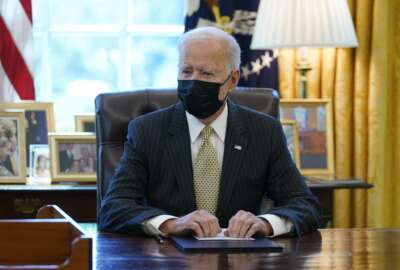The federal government regularly achieves its goal of awarding 23% of eligible federal contracting dollars to small businesses, but that overall success has obscured a growing number of concerns surrounding the small business contracting ecosystem. For example, it’s been far less successful in meeting its goals for awards to those qualifying for socioeconomic set-asides, like women-owned, service-disabled veteran-owned, and HUBzone small businesses. And that 23% of contracting dollars is being awarded to a shrinking pool of businesses.
Category management is one major influence contributing to the decline of the small business contractor ecosystem. Small businesses have been warning about its effects for years. Reforming category management was also one of the priorities specifically mentioned in the Biden administration’s plan to improve small business contracting.
Now, the Small Business Administration is taking steps to begin that reform.
“That is the top issue that the White House and [SBA] Administrator [Isabella] Guzman wanted us to address,” Bibi Hidalgo, associate administrator of SBA’s Office of Government Contracting & Business Development, told the House Committee on Small Business during a hearing Thursday. “And so as a result, we negotiated with [the Office of Management and Budget] and the White House to have all the socioeconomic firms — that includes service-disabled veterans, women-owned businesses, all place-based HUBZone firms, and small disadvantaged businesses — into tier 2 of category management, which is the rating system that they had created. So that means that 33,000 more additional firms are part of that higher level tiering category, which will create more access for contract opportunities.”
Hidalgo said her team is still tracking the data, but anecdotally, they’re seeing positive trends due to this change. Some business owners are reporting being contacted for the first time in years, she said. And they’re seeing increase in new entrants to the program, which is one of the metrics they’re using to ensure that it’s not just the spend that increases, but the health of the overall ecosystem.
Hidalgo also pointed to increased accountability as a recent change to address these issues. The administration’s reform plan directed that small business contracting goals be included in the performance plans for all Senior Executive Service managers.
“This is part of essentially their [key performance indicators],” she said. “So we are seeing a difference. They are now reaching out more and more. My staff was just telling me this yesterday: Across the board agencies are reaching out to identify more businesses across all the socioeconomic categories.”
But these aren’t the only challenges; the deeper the administration and Congress dig into this problem, the more inequities they discover. For example, Rep. Sharice Davids (D-Kan.) pointed out that small business contracts tend to be geographically concentrated as well. She said that “43% of the contracts went to around 17 congressional districts, 12 of which are located in Maryland and Virginia.”
Hidalgo said this is largely a result of contract bundling. That’s a practice where an agency will roll together a few smaller contracts into one larger one in order to better leverage its purchasing power. The concept originated from hardware acquisition, in order to better ensure components were interoperable. But as the government has transitioned to purchasing more services and solutions, contract bundling can look more like enterprise-level acquisitions.
Contract bundling is another instance where experts have been sounding the alarm for years. President Biden first announced it as an administration priority in December 2020.
Hidalgo said contract bundling often favors larger companies and small businesses that work with them as subcontractors. She said that new entrant data her team is collecting is also being analyzed geographically in order to find ways to ease that concentration.
Women-owned small businesses
Hidalgo has also been working to troubleshoot the certification processes for small businesses, she said. For example, Rep. Chrissy Houlahan (D-Pa.) expressed concern at recent SBA Office of Inspector General findings that out of 15,000 applications for certification as a women-owned small business (WOSBs), around 12,000 were immediately returned for more information.
“The way it was set up is they would ask applicants for all of their documents at once. But it turns out if they didn’t upload them individually, then it would only accept one of the documents. So I said ‘this is unacceptable and we need to fix this right away,’” Hidalgo said. “My team got right on it, fixed it to at least inform the business owner that they needed to upload one at a time. And as a result, we’re seeing differences like that are having an impact. We’ve now certified well over 5,700 firms; we’re on pace to certify over 6000 this year. Any incomplete applications, I have my pre-screeners working directly with the applicants to make sure that their application is not rejected, and that they can work toward a complete application as soon as possible.”
Hidalgo also said she signed a rule to open up a number of new North American Industry Classification System codes to qualify them for WOSBs. Now 92% of federal spend falls under those codes.
Copyright
© 2024 Federal News Network. All rights reserved. This website is not intended for users located within the European Economic Area.





